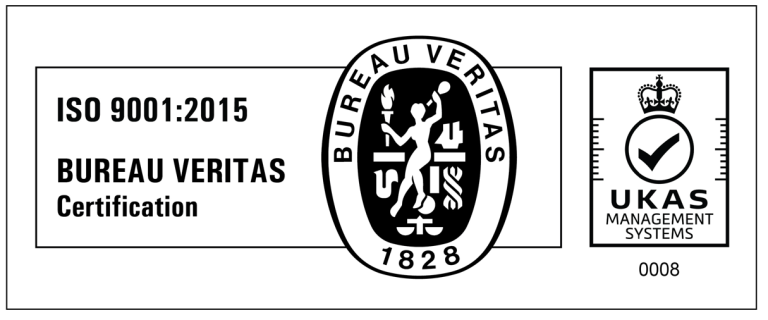Fault Finder
There are three main reasons for turbo failure:-
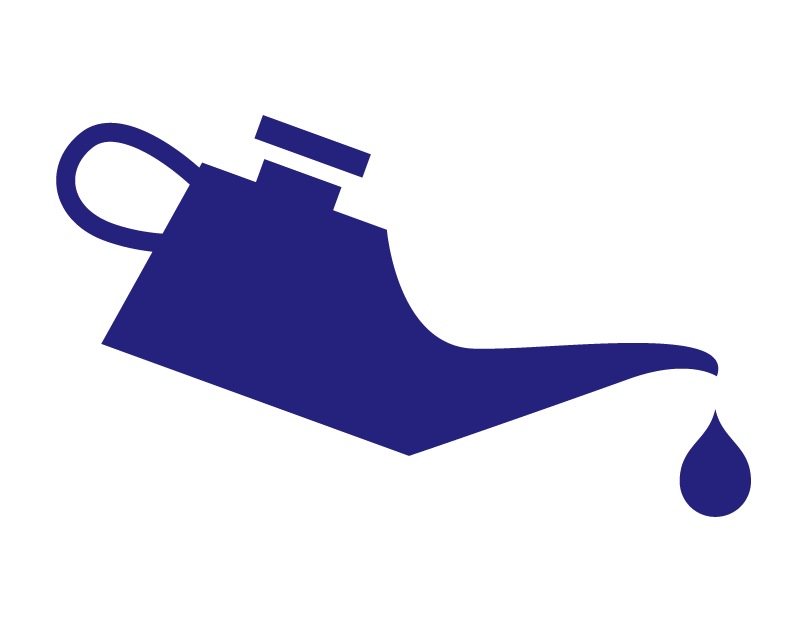
Lack of lubricant

Ingestion of foreign objects
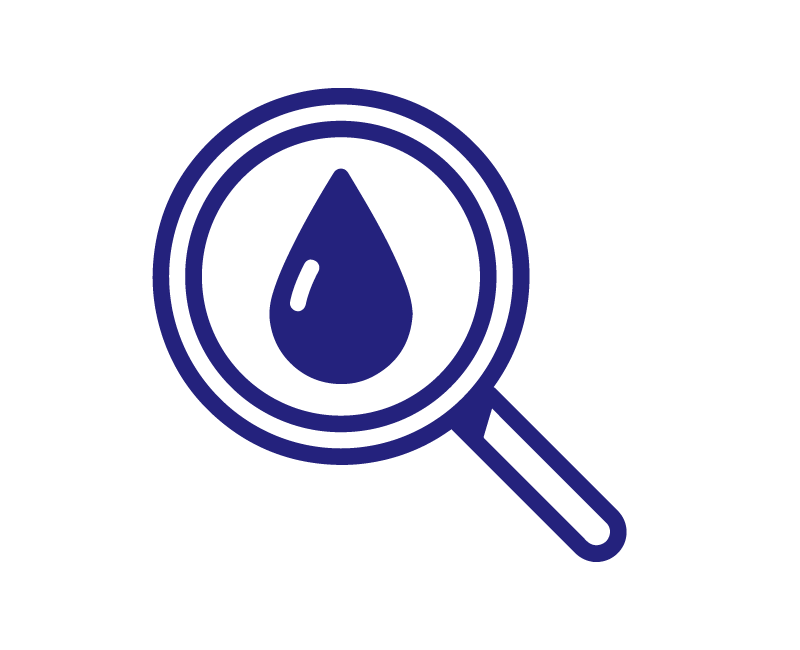
Contamination of lubricant
These problems must be addressed before the fitting of a replacement turbo.
All repairs carry a full 12-month warranty as with all new turbochargers.
- Dirty air filter system
- Suction and pressure line distorted or leaking
- Excessive flow resistance in exhaust system/ leakage upstream of turbine
- Fuel system/injection feed system defective or incorrectly adjusted
- Valve guide, piston rings, engine or cylinder liners worn/increased blow by
- Dirty compressor or charge air cooler
- Boost pressure control swing valve/poppet valve does not close
- Foreign body damage to compressor or turbine wheel
- Insufficient oil supply to turbocharger
- Fuel system/injection feed system defective or incorrectly adjusted
- Boost pressure control swing valve/poppet valve seized in closed position
- Boost pressure-sensing pipe split or incorrectly fitted
- Wastegate actuator diaphragm split
- Wastegate actuator calibration incorrect
- Turbocharger bearing damage
- Defective air filter piping/system
- Foreign body from engine damage entering turbine inlet
- Excessive boost pressure
- Dirty air filter system
- Excessive flow resistance in exhaust system/big bore exhaust
- Oil drain pipe clogged
- Crankcase breather clogged/piping restricted
- Sludge in turbocharger centre housing
- Valve guide, piston rings, engine or cylinder liners worn/increased blow by
- Dirty compressor or charge air cooler
- Piston ring sealing defective
- Excessive turbocharger bearing clearances
- Engine oil level too high
- Gasket sealer used on oil drain gasket
- Dirty air filter system
- Induction and intercooler pipes collapsing
- Excessive flow resistance in exhaust system/ leakage upstream of turbine
- Fuel system/injection feed system defective or incorrectly adjusted
- Valve guide, piston rings, engine or cylinder liners worn/increased blow by
- Restricted intercooler or charge air cooler
- Boost pressure control swing valve/poppet valve seized in the open position
- Pipes to actuator and boost control valves incorrectly fitted
- Turbocharger bearing damage
- Foreign body damage on compressor or turbine
- Turbine housing/flap damaged
- Insufficient oil supply to turbocharger
- Engine valve timing incorrect
- Accelerator cable maladjusted
- Insufficient fuel flow/pressure
- Dirty air filter system
- Excessive flow resistance in exhaust system
- Oil drain lines clogged, leaking or distorted
- Crankcase ventilation clogged and restricted
- Coke and sludge in turbocharger centre housing
- Valve guide, piston rings, engine or cylinder liners worn/increased blow by
- Dirty compressor or charge air cooler
- Piston ring sealing defective
- Turbocharger bearing damage
- Engine oil level high
- Excessive oil pressure
- High mileage engine
- Excessive flow resistance in exhaust system/big bore exhaust
- Oil drain lines clogged, leaking or distorted
- Crankcase ventilation clogged and restricted
- Coke and sludge in turbocharger centre housing
- Valve guide, piston rings, engine or cylinder liners worn/increased blow by
- Dirty compressor or charge air cooler
- Piston ring sealing defective
- Turbocharger bearing damage
- Engine oil level high
- Excessive oil pressure
- High mileage engine
- Inlet manifold gasket leaking or incorrectly fitted
- Intercooler piping split/intercooler damaged
- Exhaust manifold gasket leaking
- Exhaust system corroded
- Turbine housing mounting flange gasket leaking
- Exhaust gas leakage between turbine outlet and exhaust pipe
- EGR valve not seating correctly
- EGR valve piping broken
- Turbocharger bearings worn
- Restricted air filter
- Imbalanced turbocharger rotating assembly
- Damage to compressor wheel inducer blades
- Damage to turbine wheel assembly
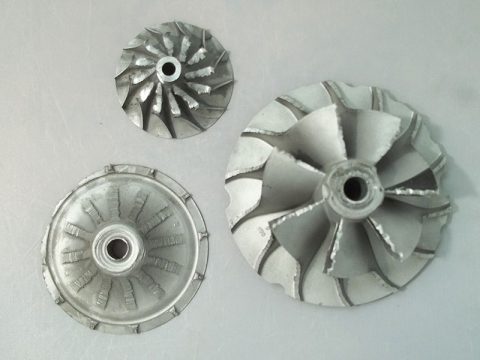
Compressor Wheel – Major Impact Damage
Compressor Wheel – Major Impact Damage Here, you can see three compressor wheels with varying degrees of damage to the blades. This kind of damage is fairly common, and caused when a foreign object (like a stone or piece of metal) enters the compressor on the air inlet side. In cases where you find major
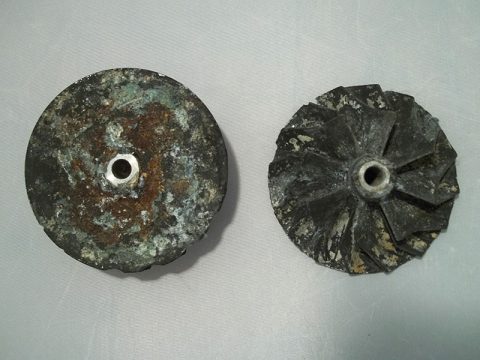
Compressor Wheel – Corrosion Damage
Compressor Wheel – Corrosion Damage This is a common problem with turbos that are attached to pieces of equipment that are stored outside, like marine turbos and those attached to outdoor generators. The problem is that prolonged exposure to the elements and water causes a build up of corrosive materials (and rust). Apart from causing
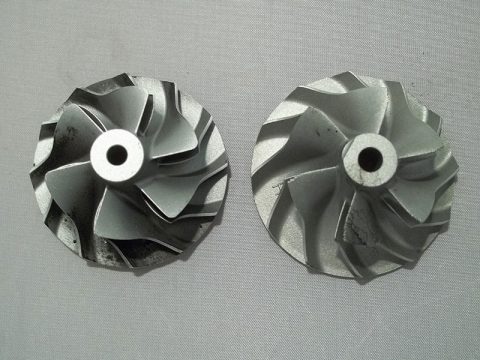
Compressor Wheel – Minor Impact Damage
Compressor Wheel – Minor Impact Damage This example illustrates the damage that can be caused by inadequate or faulty air filtration. It’s a common problem and in these examples, small pieces of dust, dirt and grit have been able to enter the turbos on the air inlet side. Over time, these particles have begun to
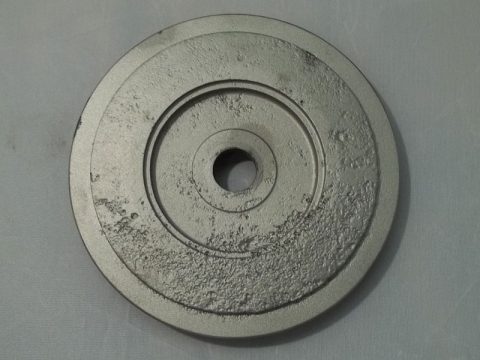
Seal Plate Damage – Corrosion
Seal Plate Damage – Corrosion In this image, you can see a seal plate with the tell-tale signs of corrosion damage. On a new, undamaged back plate, the surface would be smooth, but here, corrosion has caused the face of the seal to become pitted, worn and roughened. This kind of problem is fairly common
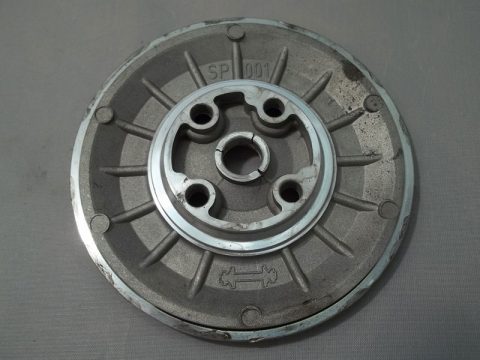
Seal Plate Damage – Excessive Play in Bearings
Seal Plate Damage – Excessive Play in Bearings Here, the seal plate has been damaged by excessive play in the journal bearings (also known as thrust bearings). On the face of the plate, you can clearly see that the bore has been chewed and worn down by the bearings. On the rear of the plate,
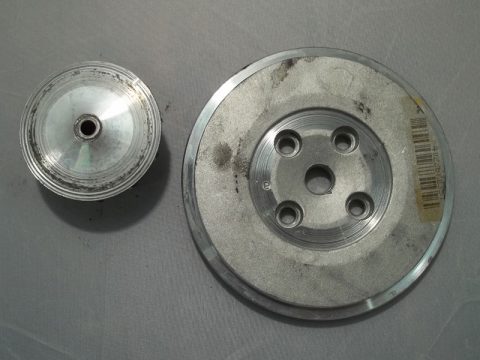
Seal Plate Damage – Excessive Wear of Bearings
Seal Plate Damage – Excessive Wear of Bearings If the thrust or journal bearings become excessively worn, then they can cause damage to the seal plates like in the example pictured here. When bearings become worn, this allows the rotor assembly to float on its axis. In turn, this allows the back face of the
Or if you’d prefer you can use online chat or email us.

